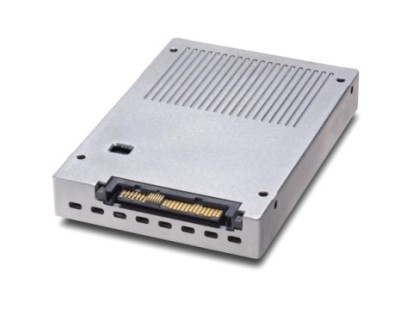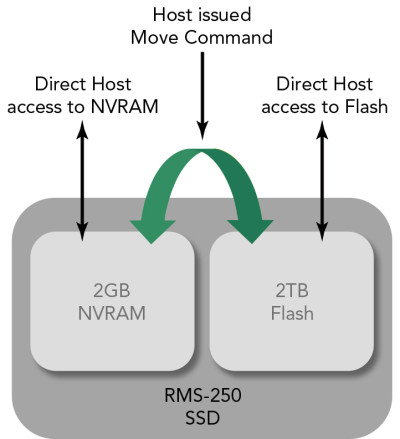319K IOPS & 1,741 MB/s
in 66/33 Data Center Workload*
*2TB RMS-250 with <3% internal overprovisioning
Fully loaded SSD in ‘Steady State’
No RAM/NVRAM caching enabled
66% Random 4K Reads
33% Sequential 16K Writes
within Random 8MB Segments
SSD QD = 128
- 100% 4K Sequential Read: 581K IOPS, 2,380 MB/s
- 100% 4K Sequential Write: 601K IOPS, 2,461 MB/s
It should be noted that none of Radian’s benchmark tests
or performance measurements for Symphonic or the
RMS-250 utilize a RAM/NVRAM read/write cache
 2.5″ Form Factor
2.5″ Form Factor
NVMe PCIe Gen x4 Interface
Supporting the Symphonic Cooperative Flash Management (CFM) firmware, the RMS-250 is a eMLC SSD with unprecedented performance in the most common data center work loads. Offered in 1TB and 2TB Flash capacities, the RMS-250 and Symphonic CFM firmware provide geometric alignment from host system software throughout the SSD NAND array for maximum parallelization, delivering on the IOPS and bandwidth potential of NAND Flash.
The majority of primary storage data center workloads tend to mix reads and writes, and these reads are most often random requests. Despite overprovisioning raw Flash capacity 20% to 40%, enterprise/data center class FTL SSDs suffer unpredictable latency spikes in these workloads where the RMS-250 delivers totally deterministic low latency. And the RMS-250 CFM solution deliver this spike free QoS while providing over 97% of the raw Flash capacity to the user (less than 3% overprovisioning).
Configurable addressing and geometry emulation balance performance with efficiency while providing Forward Compatibility and RAS functionality required of a data center class product.
Supports:
- Symphonic™ Cooperative Flash Management firmware
- Up to 2GB host controlled NVRAM
- Up to 2TB eMLC Flash
- 2.5” Form Factor with SFF-8639 connector
- NVMe PCIe x4 Gen3 interface
- Supports 4K or greater read and write accesses
- DiaLog™ OEM Diagnostic Lifecycle Monitoring
- Fault Tolerant Flush-to-Flash™ Backup System
- DuraLife™ Ultra-Capacitor Power Management System
Host Controlled User NVRAM
- Host controls what data is stored in NVRAM
- Host determines what, when and where data should be transferred to/from NVRAM
- Host can issue single delegated move command, transferring data between SSD’s NVRAM and Flash without copying data back into system memory

NVRAM
The NVRAM on the RMS-250 is intended for customer/system use and not utilized as a cache in Radian’s performance benchmarks. With a hybrid of NVRAM and Flash, the RMS-250 provides host systems with direct access and control over the up to 2GB of local NVRAM. The architecture enables the host to determine what data should be held in NVRAM, when it should be overwritten, or transferred to Flash. Similarly, the host can control what data should be transferred from Flash into NVRAM.
These operations are highly efficient as a single delegated move command from the host will transfer data between the RMS-250’s NVRAM and Flash without copying data over the system bus, through the software stack, and into system memory. This approach reduces overhead from data copying and provides the host a new design space for system-level optimizations.
- DiaLog™ OEM Diagnostic Lifecycle Monitoring [more]
- Fault Tolerant Flush-to-Flash™ Backup System [more]
- DuraLife™ Ultra-Capacitor
Power Management System [more]
With exceptional, consistent performance for small random writes and unlimited write endurance, host controlled NVRAM can minimize the updates to Flash, improving Flash wear out and minimizing latency spikes.
The NVRAM is visible as a standard block device that supports DMA operations. It can be utilized as a write-cache, write-ahead log, for intent logs, metadata, journaling, or for any operations requiring frequent access to low latency persistent storage.
